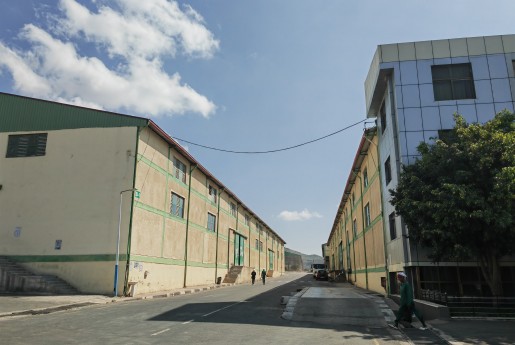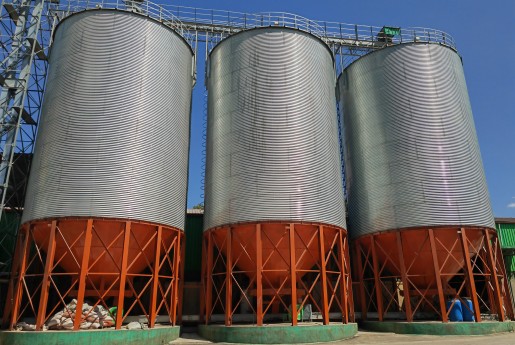During this week's on-site inspection, Bidragon Company visited the sites of projects that had been completed in 2017. Through communication and observation with customers, it discovered some existing problems and proposed corresponding solutions. Including but not limited to the following aspects:
First, the feed silo is used improperly. During the communication with the customer, we learned that when the feed silo is used, material blockage will occur if there is a large amount of material unloaded, which will lead to motor failure of the elevator.This is because the beam entry pit and the elevator are connected through a hose. There is a manual valve between the hose and the inlet of the elevator. After the customer installed it, no test adjustment was performed. Therefore, when over-filling occurs, the elevator is overloaded, causing the silo to become blocked and the motor to be damaged.
Second, feed silo blocking is a common problem, and it may also be due to the following reasons:For example: too high feed humidity will cause the feed to stick together and block the silo outlet; feed particles that are too large or too small will also cause blockage; feed particles that are too large will increase the resistance of the silo outlet, causing blockage. If the feed particles are too small, they will easily accumulate in the silo, which will also lead to material blockage; there are impurities, foreign matter or agglomeration in the feed, and these phenomena will cause material blockage.
Third, to avoid clogging of feed silos, the following measures can be taken:Adjust the manual valve to a size that matches the output of the elevator, and adjust it repeatedly until the material is no longer blocked. During use, pay attention to operating specifications to avoid improper operations such as excessive filling and excessive vibration; keep the feed humidity within the appropriate range and avoid humidity too high; according to the requirements of the feed silo, control the size of the feed particles to avoid being too large or too small; clean the silo regularly to remove impurities, foreign matter and agglomerations.
Fourth, Bidragon Company has a deeper understanding of the quality and performance of its products through on-site inspections of customers' feed silo usage in recent years, and has conducted in-depth communication and exchanges with customers in order to better satisfy customers needs and provide better products and services, and the customer's equipment usage effects have also been further improved.
In short, feed silo blocking is a common problem. Factors such as feed quality, humidity, particle size, and silo structure need to be comprehensively considered, and corresponding measures should be taken to prevent and solve the blocking problem.


